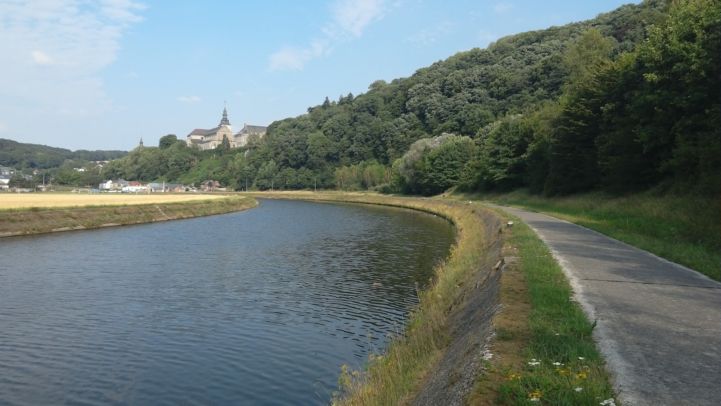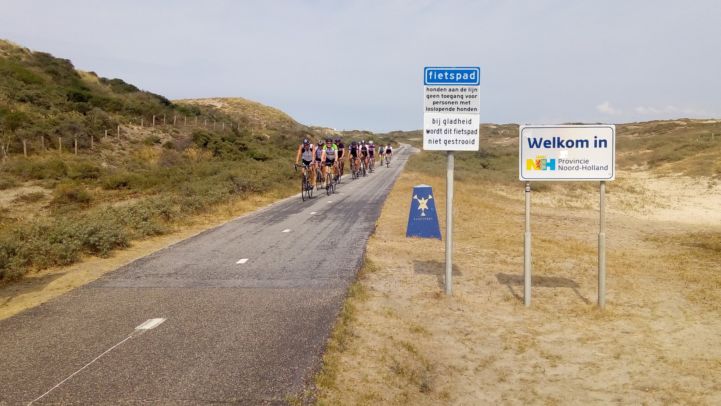Planning successful cycle routes: EuroVelo 19 as a best practice example – Part 4
EuroVelo 19 - Meuse Cycle Route is an excellent route in itself but is also part of the wider EuroVelo network. If 1,050 km of cycling from the source to the mouth of the Meuse is not enough for you, you can combine it with other long-distance routes, such as the EuroVelo 3, 4, 5, 12 or 15.

The first other European cycle route you will encounter while cycling along the Meuse from its source is EuroVelo 5 - Via Romea (Francigena). A thousand years ago, pilgrims travelled from England to Rome, and sometimes further to Jerusalem via the port of Brindisi. The route now connects the main European institutions in Brussels, Luxembourg and Strasbourg. Between Dinant and Namur, EuroVelo 5 and 19 run together along the Meuse. In Dinant, EuroVelo 5 turns towards Ciney, Bastogne and Luxembourg; in Namur - towards Brussels, Lille and Calais.
In Namur you will meet another pilgrimage route: EuroVelo 3 – Pilgrims Route. To the west it follows the Sambre through Charleroi to the French border and serves as the backbone of the Hainaut cycling network. From there, EuroVelo 3 runs through Paris, Orleans, Bordeaux and Pamplona to Santiago de Compostella.

Back to EuroVelo 19, Liege is the next node in the EuroVelo network. From here you can follow the EuroVelo 3 to Aachen, Cologne, Hamburg, Gothenburg and finally via the Sint-Olavsweg to Trondheim. The section up to the German border has recently been upgraded with new bridges and road surfacing and can also offer a pleasant side trip. As far as Homburg, EuroVelo 3 follows a former railway line (RAVeL L38), which allows you to easily cross the mountainous area east of Liège. But if the hills look scary, do not hesitate to cheat a little: take the train to Welkenraedt and enjoy the gentle descent back to Liège.
In Venlo, EuroVelo 19 intersects with EuroVelo 4 – Central Europe Route. Despite the name, you can also take the route to the west, through Noord-Brabant and Zeeland to the Belgian and French coasts. In Roscoff, the EuroVelo 4 connects to the longest of the EuroVelo routes, EuroVelo 1 – Atlantic Coast Route.

From Woudrichem, the Meuse route repeatedly joins EuroVelo 15 – Rhine Cycle Route, when the two rivers mix, merge and split many times in the delta area. When both arrive at Hook of Holland, they meet EuroVelo 12 – North Sea Cycle Route. The entire Dutch section of EuroVelo 12, LF Kustroute, is well developed and fully signed, and both the route to the north - through The Hague, Haarlem and the 32.5 km-long causeway Afsluitdijk to Friesland and Groningen - and to the south , through Zeeland to the aforementioned EuroVelo 4 - are worthwhile.
This series of articles showcased the different aspects of successful cycle route planning using EuroVelo 19 – Meuse Cycle Route as a best practice example. In the first part, Aleksander Buczyński presents the backbone approach to route planning before sharing some personal tips for cycling the route in the second article. Part three highlights how the challenge of crossing the Meuse has been turned into attractions of their own before the series ends with this fourth part examining how EuroVelo 19 fits into the EuroVelo network.
Text and photos: Aleksander Buczyński